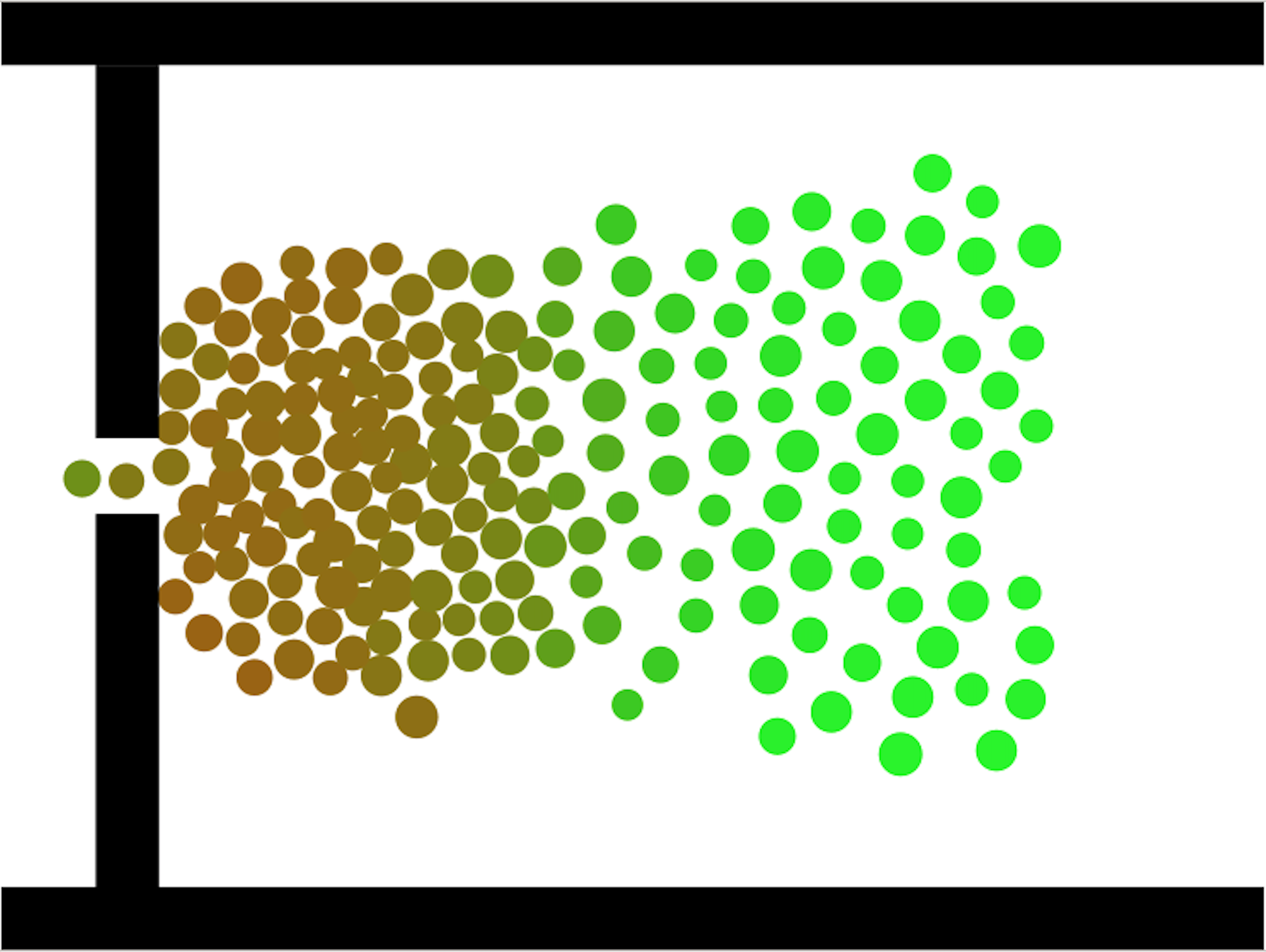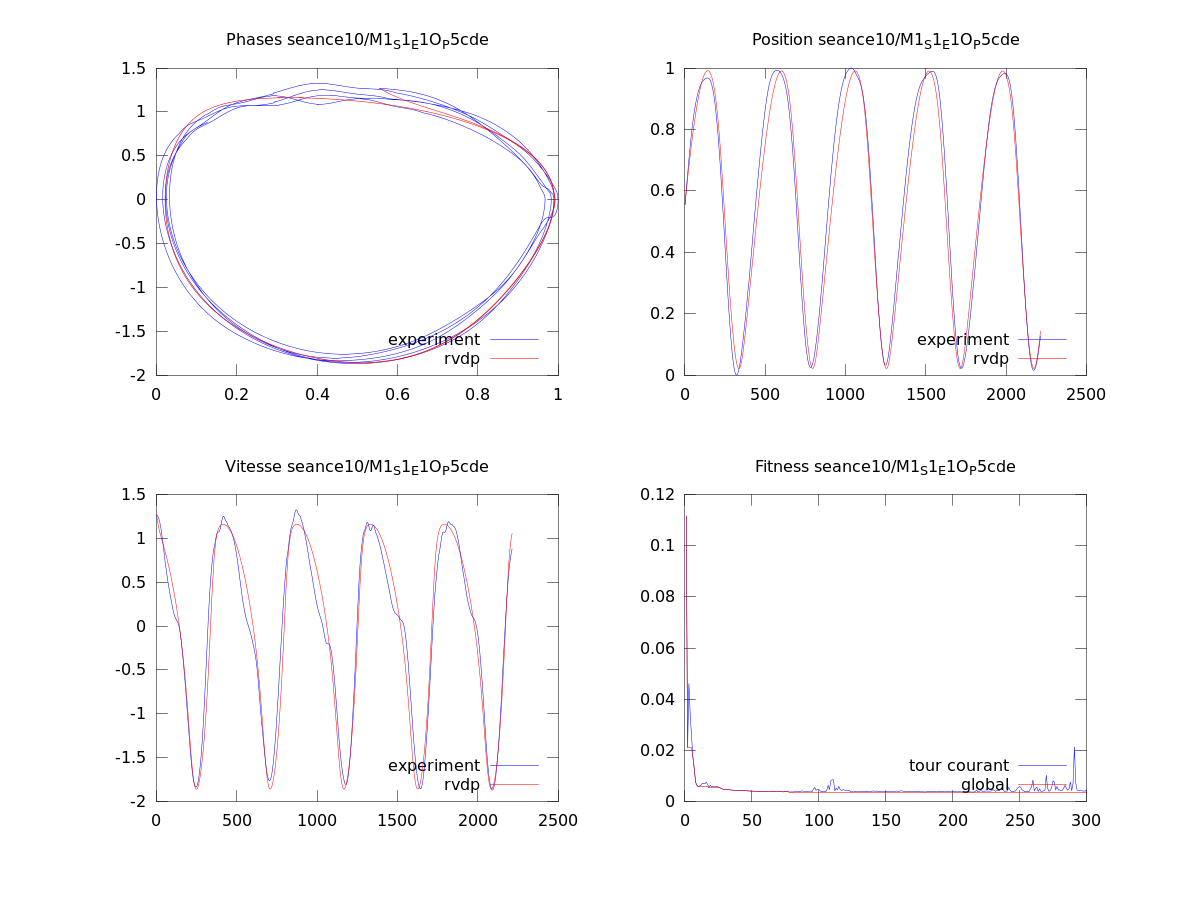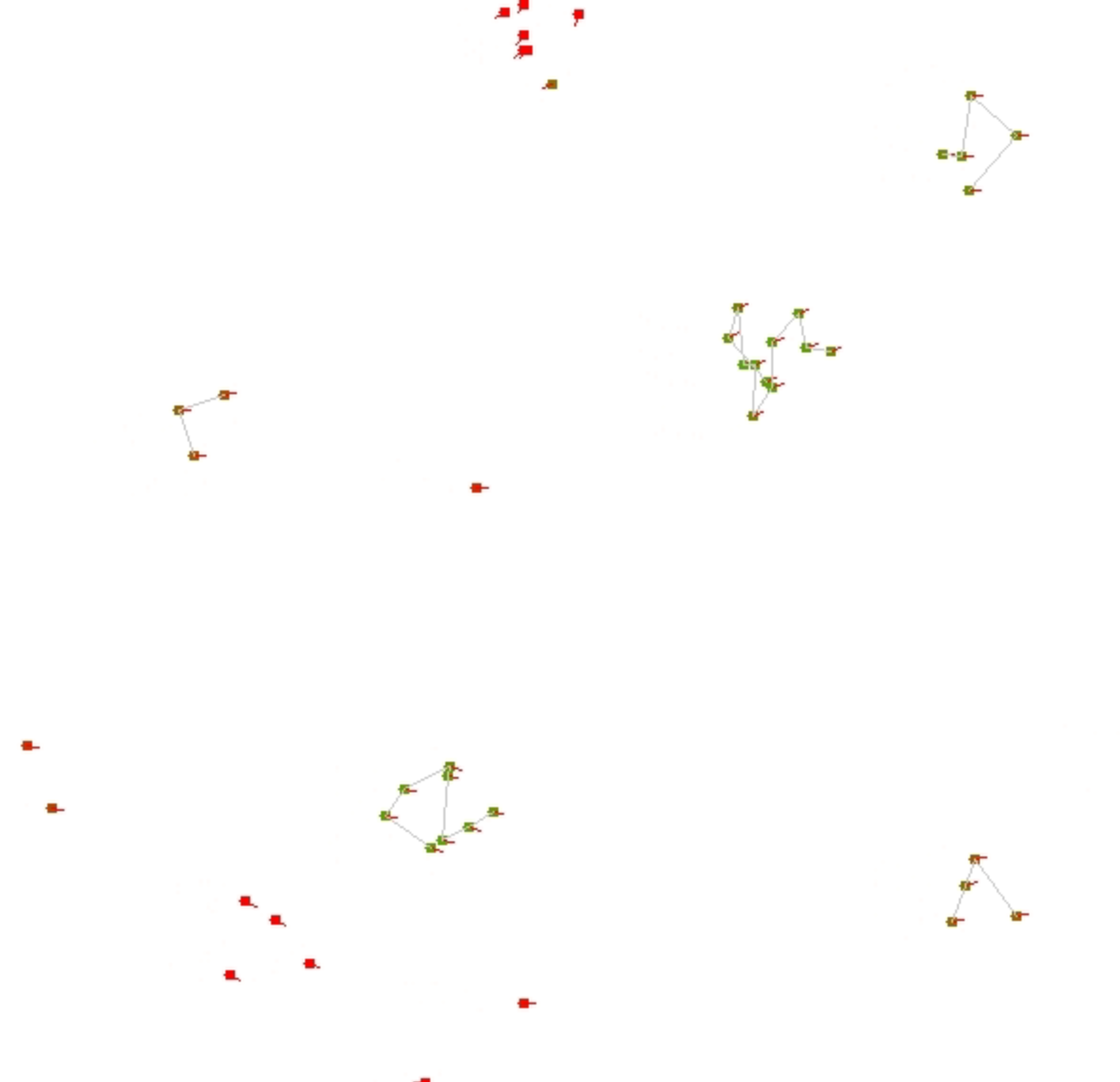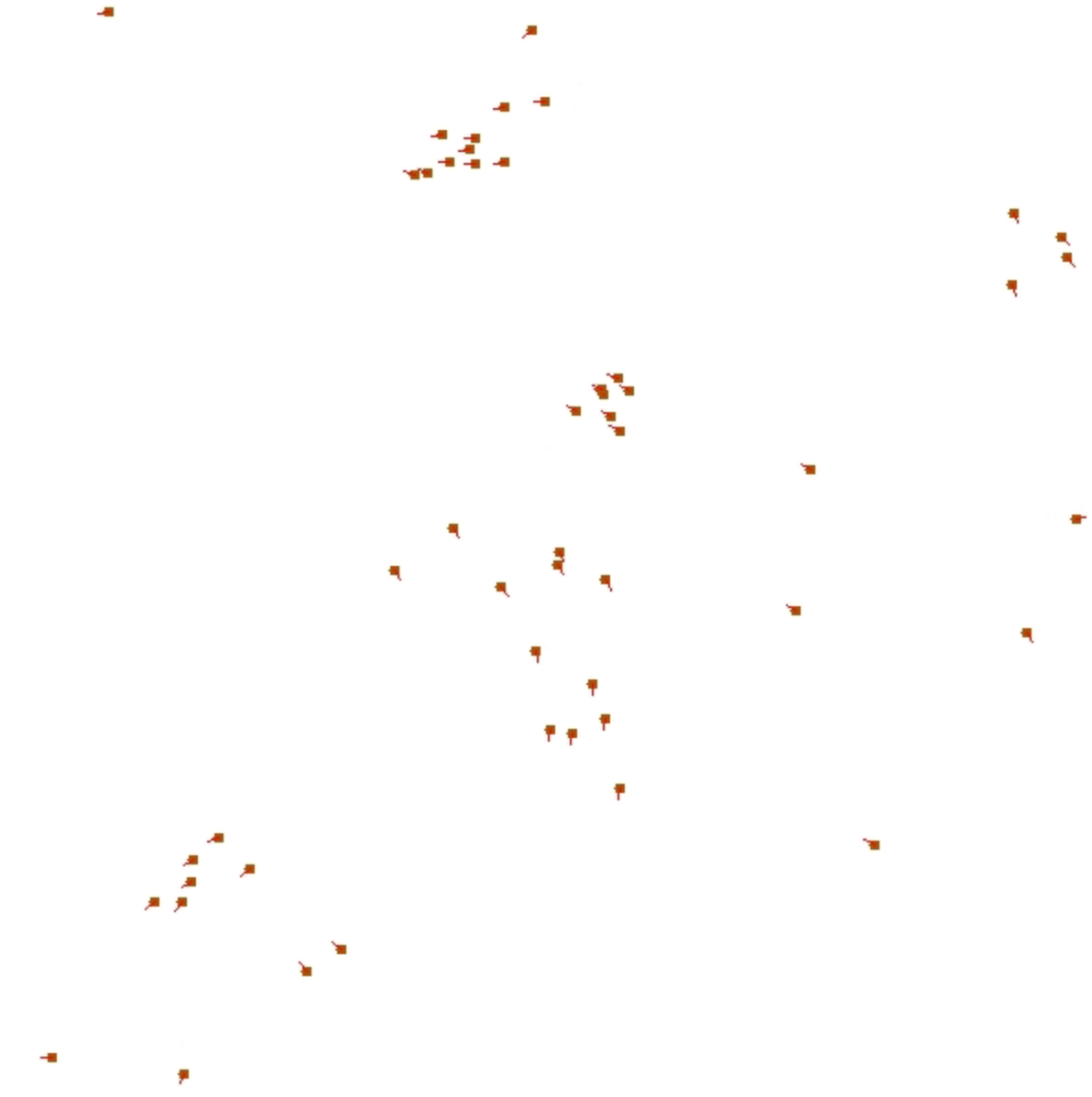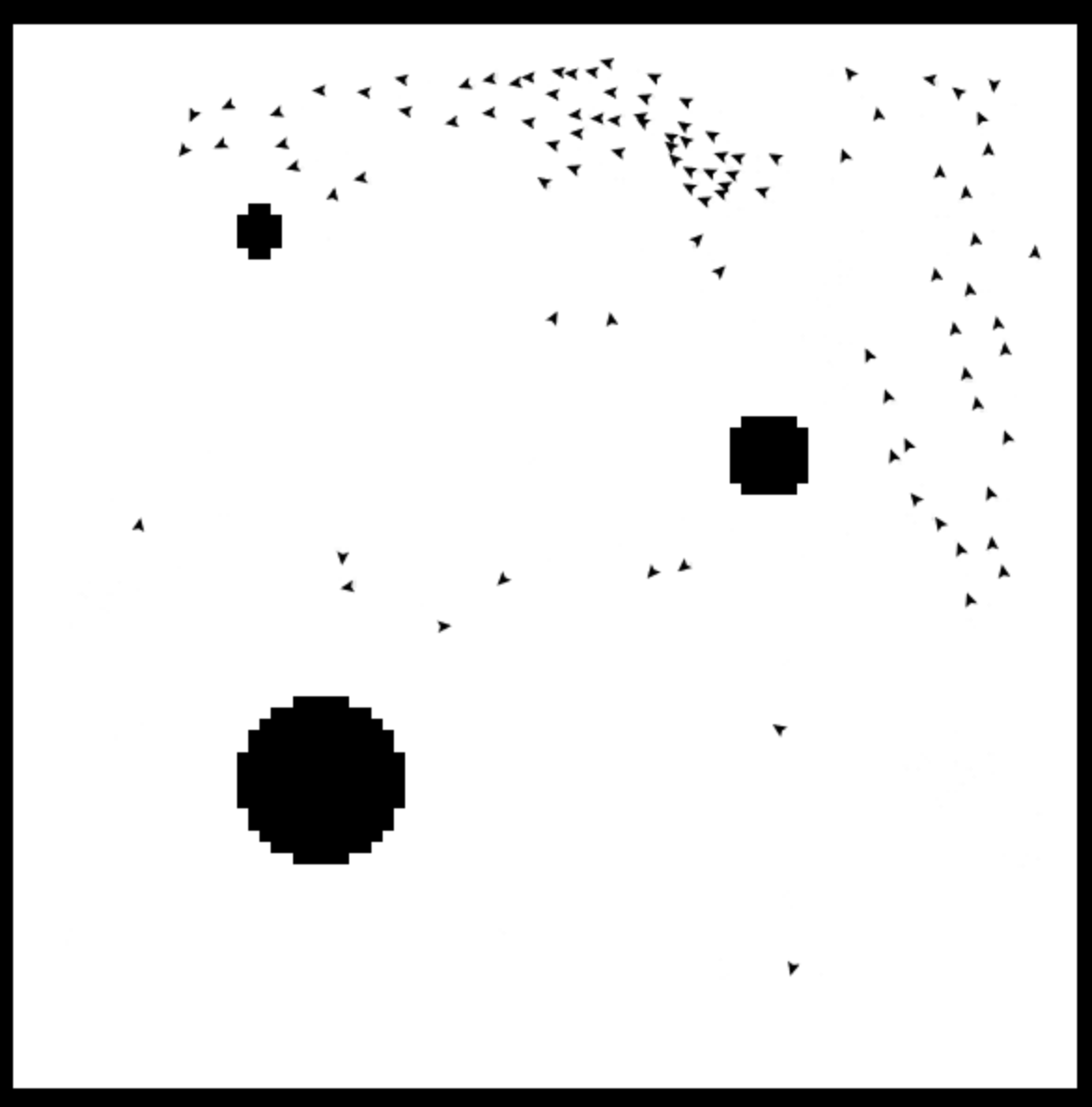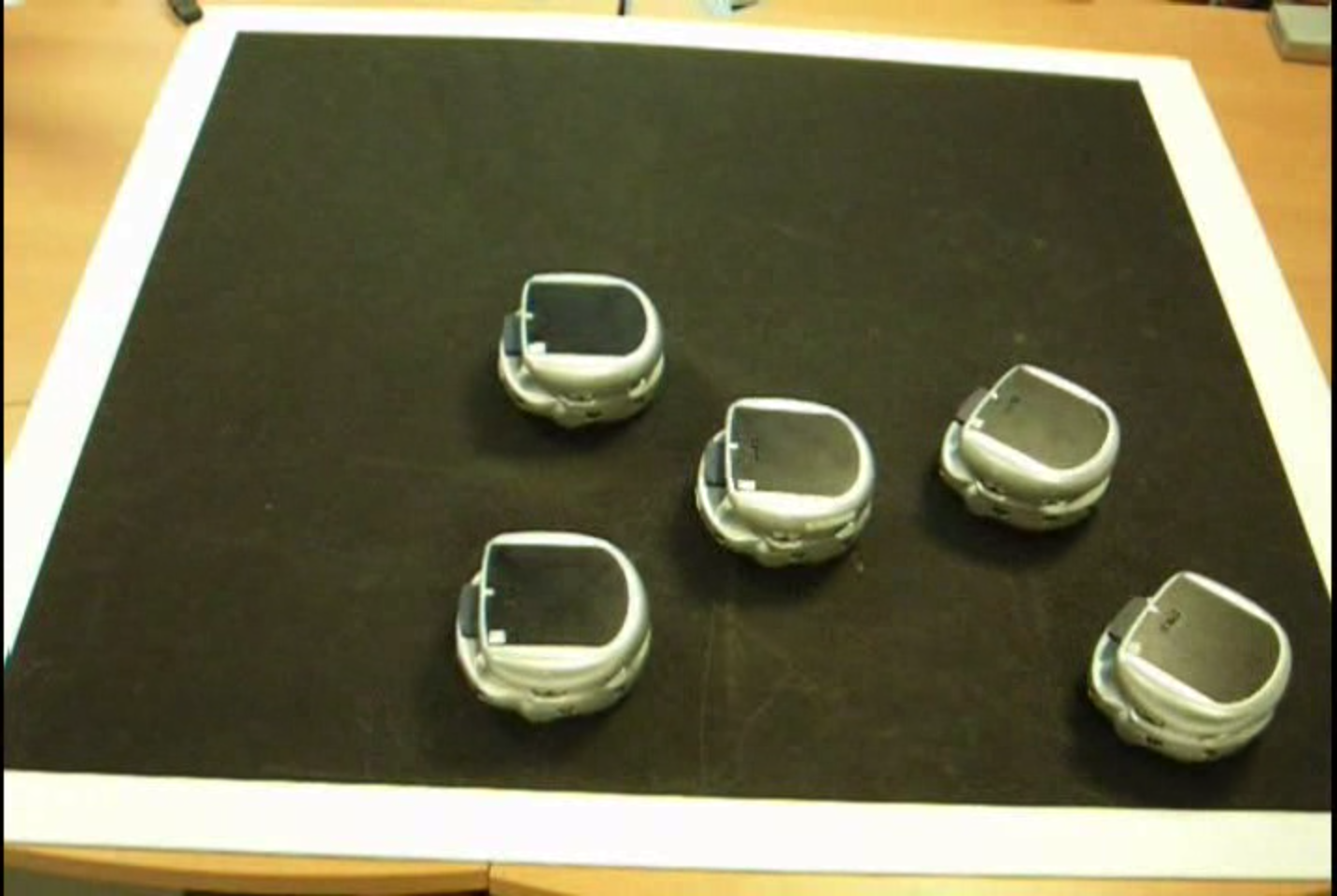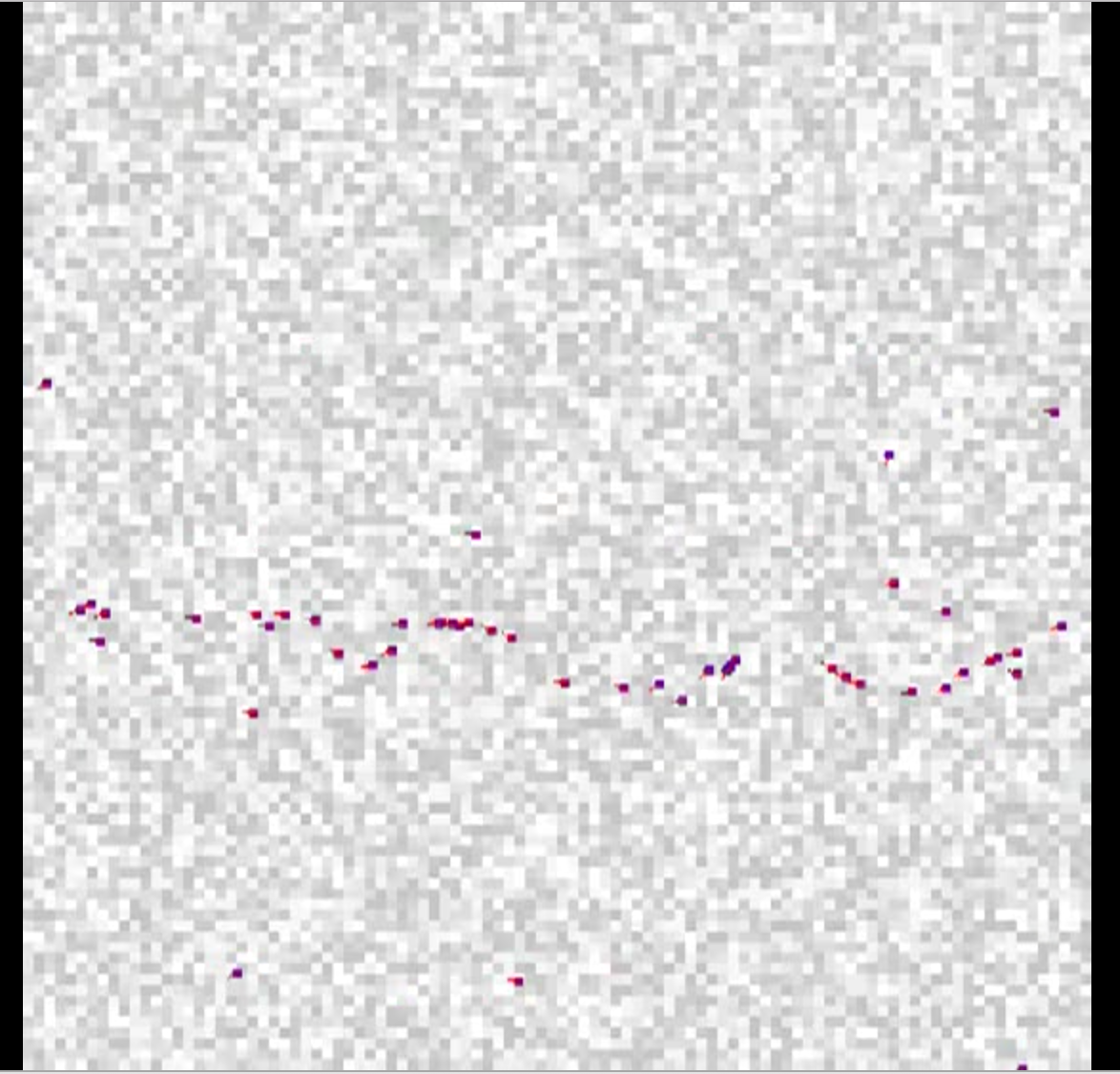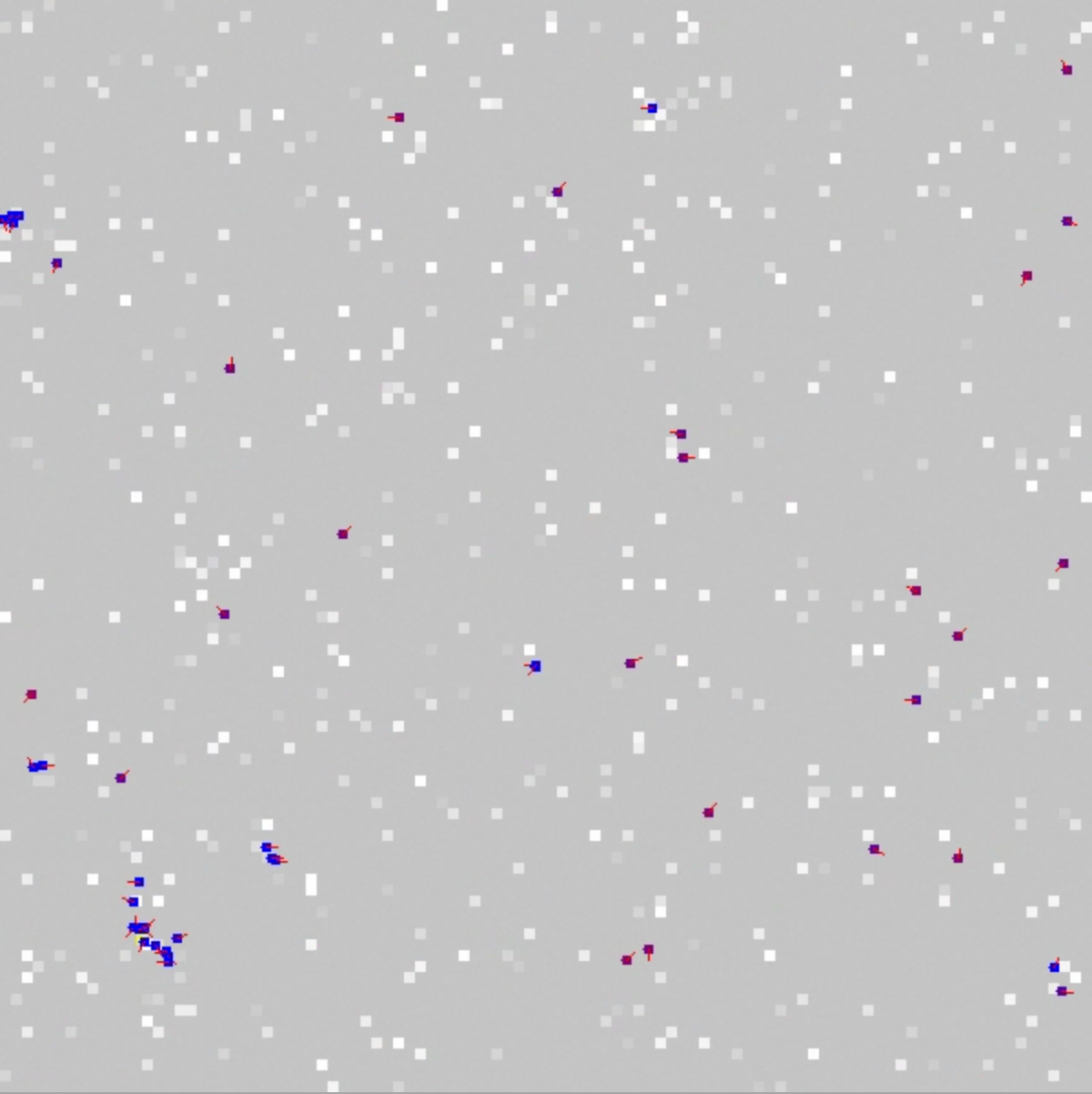Topics
Most recent works (since 2011) :
Evacuation processes in confined spaces generate nervosity in the crowd and consequently stampedes and bottelnecks. The nervosity propagation in crowds may however improve the flow. This is the counter-intuitive outcome of this work.
(Programmed with GAMA platform)
The study on nervousness was carried out in a corridor narrowed by a door in the case of a one way flow.
This schema shows the ground principle of the effect of nervosity propagation on mobility, and the retroaction process wich results.
By means of information theory tools, we can detect chaotic signals on nodes of an interaction network. Comparing signals with one another, and starting from a random node, we may go back up to the source of the chaotic perturbation. This is the kind of algorithm we designed in this cascading failure scenario.
This last topic is quite different, nevertheless it involves a Particle Swarm Algorithm to idenify some parameters of a Van der Pol oscillator so as to fit with real data captured during swimming experiments. This approach leads to analyze the differences in dynamic profiles of beginners in swimming and expert swimmers. The aim is to design a better way of learning for improving swimming techniques.
Some simulations based on the Logistic/Chaotic Multi-agent System (before 2011 - PhD thesis)
Flocking
A flocking simulation in a toroidal environment (100x100) involving 50 chaotic agents (each control parameter is set to 1.0 - the perception radius is set to 5) with a high coupling coefficient (0.9) after 3000 time steps (programmed in the MASON platform):
stable cluster are in green, whereas unstable ones are in red.
A flocking simulation in a toroidal environment (100x100) involving 50 agents (each control parameter is randomly chosen between 0 and 1 - the perception radius is set to 5) with a high coupling coefficient (0.99) from the first time step (programmed in the MASON platform):
flock_e099_R5_t0.avi
stable cluster are in green, whereas unstable ones are in red.
Flocking with adaptation to the environment
Flocks of robots
This snapshot shows a software simulation of a collective motion of logistic agents in a finite environment with obstacles (programmed in the NetLogo platform)
This experiment aimed at testing the logistic multi-agent model within a small group of mobile robots moving in a short square space. Their interactions lead them to move together.
Trails of agents
In the following simulation, the environment (toroidal with the same dimensions as before) is filled with randomly chosen values between 0 and 1, respectively visualized by white and gray cells. The logistic agents can perceive these data through a given perception radius (1 pixel here). They modify their internal control parameter according to this perception. Their motion is governed by one variable only (the angle of the velocity given by the logistic map) in the same way as before. (programmed in the MASON platform)
Local minima detection
As before the environment is a random grid, but the agents do not move in the same way. The dynamic law is different : the agent's velocity depends on the perceived data. One pixel in yellow on the snapshot corresponds to the global minimum of the field where agents are gathering. (programmed in the MASON platform)
TSP results
The logistic ants algorithm has been tested on a small 48 nodes TSP (att48 from the TSPLIB library). The results have been compared to the Ant System Algorithm results on the same problem (Publication).
